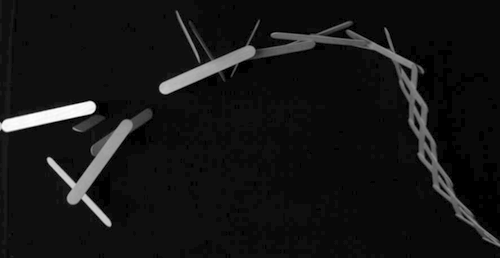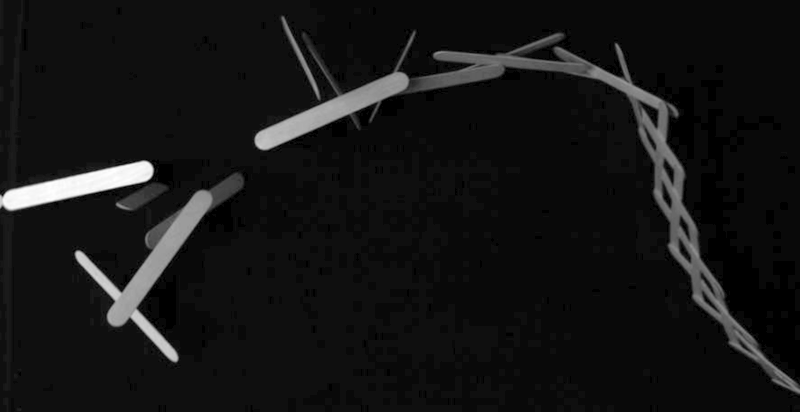Video—Cobra Wave Explained
A long, interwoven lattice of popsicle sticks can release its stored energy in a visually impressive, propagating wave—a raised section of the structure akin to an angry cobra that spits out sticks as it moves. Researchers have now theoretically modeled this phenomenon and used high-speed video of these “cobra waves” to verify the model’s predictions for the wave’s shape and speed. They have also found that there is a narrow range of popsicle-stick lengths that can produce a cobra wave. The results may prove useful for understanding microtubules, which are biopolymers that rapidly unravel when their end cap is released.
Christophe Clanet of the École Polytechnique in Palaiseau, France, and Frédéric Chevy of the École Normale Supérieure in Paris each coached a team of physics students in a 2016 problem-solving competition, and together they decided that one of the problems—the one on cobra waves—deserved further study. In the first part of their new paper, Clanet, Chevy, and their colleagues reason that the wave motion is powered by the recoil resulting from ejecting sticks, and those sticks get their kinetic energy from the original potential energy stored when the sticks were bent to form the lattice. This thinking leads them to derive a wave speed formula that depends on the sticks’ material properties and on their length-to-thickness ratio but not on their width. The team verified these predictions in experiments with cobra waves made from six different types of sticks.
To explain the cobra-like shape, the researchers rely on elasticity theory, modeling the lattice as a uniform, continuous, and flexible material. They find that the shape depends on a competition between the recoil resulting from ejecting sticks—which keeps the raised section up—and the elastic and gravitational forces that pull it downward. They derive expressions for the cobra height in two regimes, depending on the relative importance of gravity (stick weight) compared with the sticks’ bending stiffness. While the light-stick regime seemed to break some of the assumptions of the model, the height predictions of the heavy-stick regime were accurate when compared with the team’s video data.
Finally, the team found that the cobra wave can only exist if each stick is short enough that the potential energy it stores when bent is larger than its gravitational energy when raised up. But each stick must also be long enough that it doesn’t break when creating the lattice.
This research is published in Physical Review Letters.
–David Ehrenstein
David Ehrenstein is a Senior Editor for Physics Magazine.





